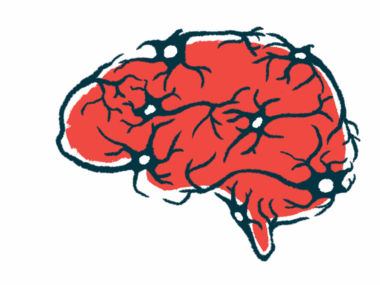Ceramic blanket improves motor performance in Parkinson’s mice
Balance, movement gains, higher cell counts in affected brain regions seen
Written by |

A ceramic blanket, a device being developed by Gladiator Therapeutics to improve blood flow and speed up wound healing, improved motor performance in a mouse model of Parkinson’s disease in a recent study.
Besides improving balance and movement, the blanket also resulted in an increased number of cells in the striatum and substantia nigra, two brain regions affected in Parkinson’s.
The study, “Amelioration of Motor Performance and Nigrostriatal Dopamine Cell Volume Using a Novel Far-Infrared Ceramic Blanket in an A53T Alpha-Synuclein Transgenic Parkinson’s Disease Mouse Model,” was published in Current Issues in Molecular Biology.
Parkinson’s causes a range of motor symptoms, from tremor and slowness of movement to rigidity and poor balance. Patients also may experience freezing of gait, where they feel stuck to the floor, unable to take a step forward.
One benefit of a ceramic blanket, which emits far-infrared radiation (a type of light outside the visible spectrum), is that it can be used anywhere, without the need for a power supply and without the side effects often associated with medications.
The idea to test Gladiator’s ceramic blanket for the neurodegenerative disease came about when researchers at Orlando’s University of Central Florida College of Medicine used one on a patient with a hard to treat wound.
Earlier research in mice showed that wounds healed faster when exposed to a ceramic blanket that can emit far-infrared radiation. Besides faster wound healing, the Parkinson’s patient also reported a decrease in hand tremor and gait freezing.
According to researchers, the emitted far-infrared radiation can enter deep into the body’s cells and promote healing, prevent tissue damage, boost cell energy, enhance blood flow and oxygenation, and reduce inflammation.
Testing infrared blanket on Parkinson’s mouse model
Here, the researchers used a Parkinson’s mouse model wherein the gene coding for alpha-synuclein carries a mutation, called A53T, which is known to cause early-onset familial Parkinson’s in humans. Alpha-synuclein is a protein that forms toxic clumps in Parkinson’s, causing the death of dopamine-producing brain cells. Dopamine is a chemical messenger that plays a key role in movement. The loss of it causes symptoms of Parkinson’s.
A53T mice and healthy mice were housed in cages, placed on top of a ceramic blanket, for a month. A control group of A53T and healthy mice were housed in cages without the ceramic blanket.
Compared with the control A53T mice, it took significantly longer for those exposed to the ceramic blanket to fall off a rotating rod, or rotarod (66 vs. 49 seconds). A similar effect was observed in healthy mice (174 vs. 170 seconds).
The ceramic blanket not only improved motor performance, increasing the time spent on the rotarod by about 25%, but also eased slowness of movement, the researchers said.
When the number of dopamine-positive brain cells in the striatum and substantia nigra were counted, the researchers found A535T mice exposed to the ceramic blanket had a significant 69.80% increase over nontreated A53T animals. The treated animals had “19.75% more cells than the healthy wild control mice,” they said.
The healthy mice treated with the ceramic blanket also had “increased cell counts and were found to have 72.83% more cells than the wild control [nontreated] mice.”
The positive effects are probably due to the capacity of far-infrared radiation to induce nitric oxide, a molecule capable of reducing oxidative stress — a type of cellular damage— as well as inflammation, said the researchers, who noted this type of radiation can also improve mitochondrial function. Mitochondria are cells’ powerhouses and their dysfunction is associated with developing Parkinson’s.
The findings suggest Gladiator’s ceramic blanket “may represent a viable treatment option in Parkinson’s patients,” the researchers wrote. It’s also being tested in models of Alzheimer’s, traumatic brain injury, and heart failure.






